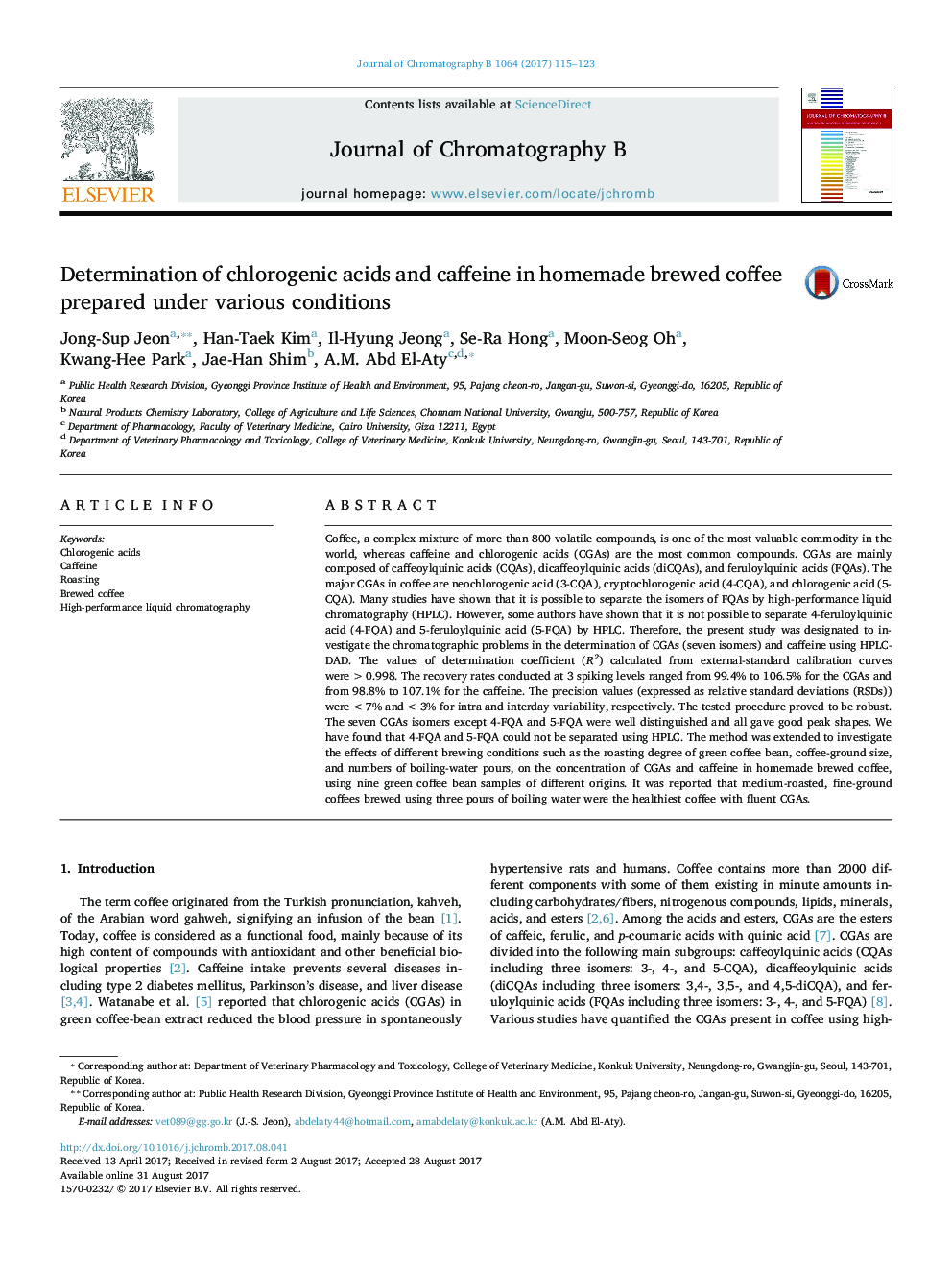| کد مقاله | کد نشریه | سال انتشار | مقاله انگلیسی | نسخه تمام متن |
|---|---|---|---|---|
| 5136117 | 1494000 | 2017 | 9 صفحه PDF | دانلود رایگان |

- Chromatographic problems were solved to determine the quantities of various chlorogenic acids (CGAs) in coffee.
- HPLC method was developed for the separation of CGAs and caffeine.
- Effects of different conditions on the quantities of CGAs and caffeine in brewed coffee were evaluated.
- The major chlorogenic acid was 5-caffeoylquinic acid (not 3-caffeoylquinic acid).
- Medium-roasted fine-ground coffees brewed using three pours of boiling water were the healthiest.
Coffee, a complex mixture of more than 800 volatile compounds, is one of the most valuable commodity in the world, whereas caffeine and chlorogenic acids (CGAs) are the most common compounds. CGAs are mainly composed of caffeoylquinic acids (CQAs), dicaffeoylquinic acids (diCQAs), and feruloylquinic acids (FQAs). The major CGAs in coffee are neochlorogenic acid (3-CQA), cryptochlorogenic acid (4-CQA), and chlorogenic acid (5-CQA). Many studies have shown that it is possible to separate the isomers of FQAs by high-performance liquid chromatography (HPLC). However, some authors have shown that it is not possible to separate 4-feruloylquinic acid (4-FQA) and 5-feruloylquinic acid (5-FQA) by HPLC. Therefore, the present study was designated to investigate the chromatographic problems in the determination of CGAs (seven isomers) and caffeine using HPLC-DAD. The values of determination coefficient (R2) calculated from external-standard calibration curves were >0.998. The recovery rates conducted at 3 spiking levels ranged from 99.4% to 106.5% for the CGAs and from 98.8% to 107.1% for the caffeine. The precision values (expressed as relative standard deviations (RSDs)) were <7% and <3% for intra and interday variability, respectively. The tested procedure proved to be robust. The seven CGAs isomers except 4-FQA and 5-FQA were well distinguished and all gave good peak shapes. We have found that 4-FQA and 5-FQA could not be separated using HPLC. The method was extended to investigate the effects of different brewing conditions such as the roasting degree of green coffee bean, coffee-ground size, and numbers of boiling-water pours, on the concentration of CGAs and caffeine in homemade brewed coffee, using nine green coffee bean samples of different origins. It was reported that medium-roasted, fine-ground coffees brewed using three pours of boiling water were the healthiest coffee with fluent CGAs.
108
Journal: Journal of Chromatography B - Volume 1064, 1 October 2017, Pages 115-123